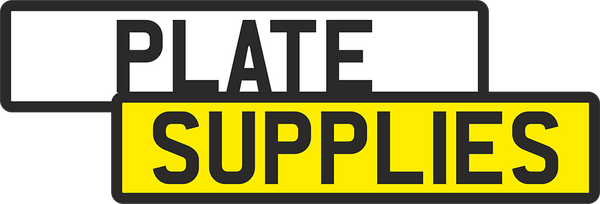How to make a 3D gel number plate
Share
Intro
3D gel number plates are becoming very popular, with customers drawn to the stylish but subtle looks, and when the light hits these plates, it's clear to see why! The process for producing a 3D gel number plate is fairly straightforward, when you have the right information to guide you. This knowledgebase article will provide that information.
Step by step:
- Taking the acrylic and reflective that you produced following our previous guide (see here if you've not done this step yet), place it securely into your purpose built number plate jig.
- Gather the letters and digits required for the registration you're making. Don't forget to double these if you are producing both a front and rear plate.
- Looking at the guidance on the top of your jig, match the registration format to the registration you are producing. For example, UP14 TES would use number 2, matching XX10 XXX. This will be your starting point.
- Position the slider so that the left side is directly on the line below the relevant number (2 in our example). Peel the first gel character from it's backing and place it carefully onto the plate through the open section of the slider.
- Lift the slider slightly as you move it to the right, placing the left side of the slider firmly against the first character you set down. Place the next character in the open section, just as you did on the first character.
- Repeat the process for each character as necessary. When you come to the point where you need a larger space (33mm as opposed to standard 11mm), use the extra spacing bar to increase the gap. This would be between the 4 and T in our example registration. Continue as normal after you have made this larger space.
- Upon placing the final character onto the plate, remove it from the jig and hold it up. You should inspect the plate carefully to ensure characters are consistent in their vertical positioning, forming a neat line, and ensure there are no other notable issues.
- If needs be, the characters can be peeled off for a short while after producing the plate, but it is slightly difficult. Use your fingernail to pry up a corner of the character and pull it off. Don't use any tools, as you could damage the surface of the acrylic.
- If you are pleased with the result of the first plate, and the customer has requested a pair of plates, produce the second number plate following the same strategy.
Important notes:
- The gel letters are flexible, so you need to try to keep them in the correct position as you place them onto the plate.
- Ensure you don't pick up any dirt on the sticky side of the gel, or on the plate, as this will create a raised bump once you have applied the character to the plate.
- The gel characters have a slight haze once immediately applied to the plate - this is normal. Use a soft, clean microfibre cloth along with some all purpose polish (we use Mr Sheen Furniture Polish) to get a perfect, glossy black finish.
